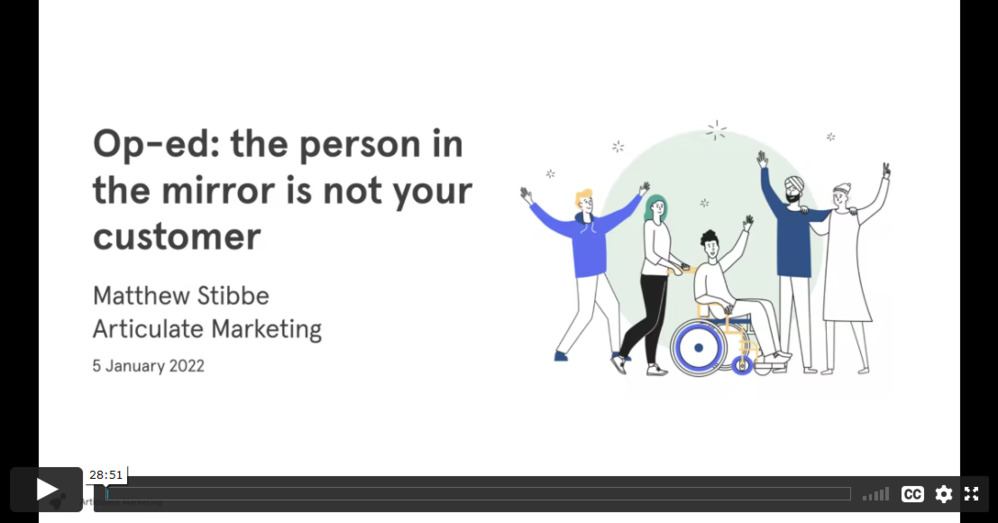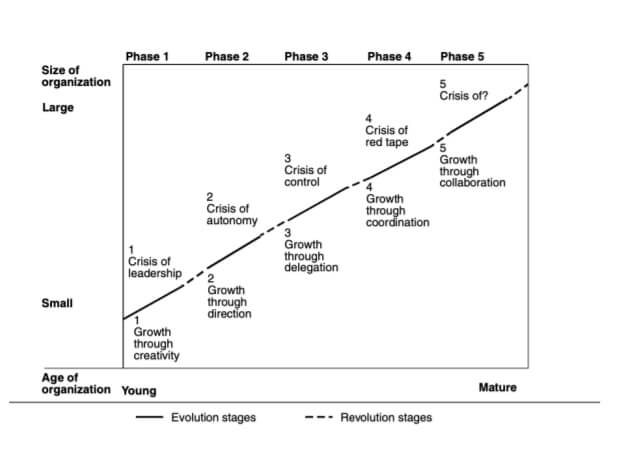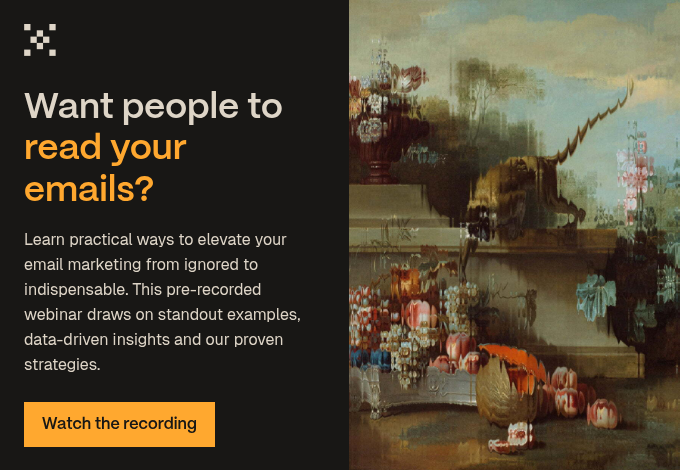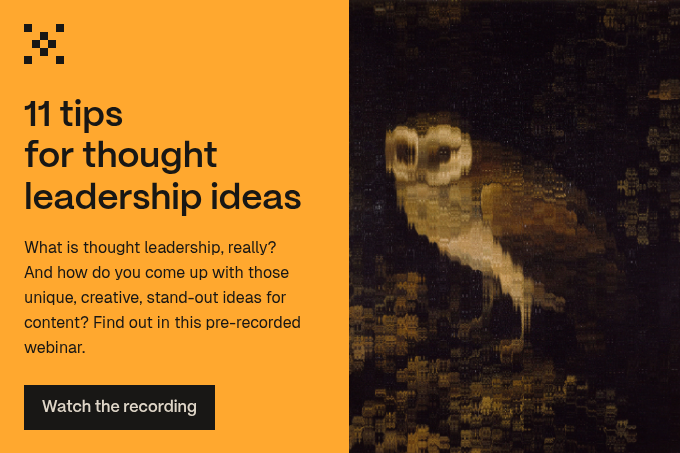Newsflash: the person in the mirror is not your customer. You are not your customer.
It’s a misconception that we know is incredibly common across all sorts of businesses, and we’ve seen it time and time again in the tech sector.
Keep reading to see if your marketing is suffering from the ‘Person in the Mirror’ problem. And, how to avoid it in the future.
This article is based on one of our webinars. View the video and download the slides below.
What is the ‘Person in the Mirror’ problem?
In a nutshell, when you think your customer is like you then you make certain, likely false, assumptions.
For example, in IT companies, you might be the genius IT person who is very comfortable talking to CIOs, CTOs and IT managers, because ‘they're just like you’. But that’s limiting.
Not all CIOs work in that role for the same reasons as you. They don’t, actually, think in the same way. They might be working in a particular industry that you know nothing about. And, crucially, these people might not be the only ones who make buying decisions for your technology. A non-technical person could have the final say. So, if you aren’t targeting your communications at them, then you’re missing an opportunity to connect with a customer.
Why it matters
Well, it matters because...
Assumptions are harmful
In marketing, we have a tendency to make assumptions that are subject to unconscious bias, meaning they perpetuate stereotypes. This article isn’t about DEI, but it’s a useful comparison to make because the resulting issues are very similar: a false, limited and potentially harmful worldview.
Take personas. ‘Marketing Mary’ is an old familiar persona for us, which is to say, an ideal representation of a customer. But that name comes with a lot of baggage around gender and background. Or, consider stock photography, which is often used on websites and in blogs. Search ‘executives’ on a stock photography site and you’ll likely get an awful lot of middle-aged white men. #NotAllCEOs
In essence — whether it applies to DEI or the person in the mirror — when you assume, you make an ass out of U and Me.
All marketing is targeting
Marketing is about talking to potential customers about their issues in their language. Not your products in your jargon, based on your assumptions.
Why? Because all marketing is targeting. You might want to bang on about Microsoft Teams all day and sell it to anyone who wants it. But you’re actually better off speaking to a very specific audience and understanding, empathising and talking about their world. Be the best IT firm for dentists. Be the accountants who only work with marketing agencies.
The thing is, while you’re talking about Teams, your audience is like the poor person trapped by a terrible bore at a cocktail party. Me, me, me, blah, blah, blah. But if you ask the right questions and show an interest in the person you're talking to, you make yourself seem more interesting and intelligent. Good salespeople know this, but it seems to pass the marketing department by.
‘"Here's what our product can do" and "Here's what you can do with our product" sound similar, but they are completely different approaches.’
— Jason Fried, Basecamp
People have ‘jobs to be done’
People don't buy your products and services for the same reason you make those products and services. We find this comes as a real shock to software entrepreneurs who’ve spent years obsessing about a product build. ‘If only you knew how good this thing was, you would buy it automatically’, right?
What your potential customers are doing, instead, is trying to solve the problems that they’re experiencing. They will be more motivated by this than by your sales pitch, or your demo of this or that feature.
For a bit of homework, look up ‘Jobs to Be Done’ by Clayton Christensen. He talks about buyer motivation in more detail in that book.
Essentially, you don't need to be an expert to consume a product or service and very often, you don't want to be. Just like you don’t need to know anything about fixing cars to hire a mechanic. Yet in marketing there is a gravitational pull towards talking about yourself, talking about your products, using your jargon, displaying your expertise, and so on, as if that provides sufficient motivation to buy.
People are trying to get the job done. All they want to know is if you can help them do it.
Why the ‘Person in the Mirror’ problem occurs
There are three reasons why this phenomenon occurs.
1. We gravitate toward familiarity
Firstly, our self-image is built on the foundations of what we do well. Psychologically speaking, we feel confident and in control when we experience familiarity. You put a lot of time, money, effort and emotional investment into your area of expertise. When someone appears to reflect that back to you, you feel an instant sense of security and connection.
2. Human beings are lazy
We like to find heuristic, simple rules to help us make decisions about things. So, you build up simplistic associations. For example, anyone who looks like, or talks like, the people you went to university with - they’re the clever ones. This is, of course, an example of unconscious bias. It’s lazy thinking.
In the world of B2B tech, this might translate to ‘anyone who would attend Microsoft Inspire is my customer because they’re a geek like me’. In fact, in another conference hall entirely (perhaps one about How To Be Your Most Productive Self At Work) you may find a whole range of interested customers that you were dismissing.
3. What got you here...
...won’t get you there.
Entrepreneurs who have developed their businesses will find themselves fighting the urge to do it all themselves. They got where they are based on their expertise, so it can be hard to let go and rely on the expertise of others. They don’t want to consider marketing their business to a new audience, because they have catered for so long to an existing one, one they relate to, one that is familiar.
Historically, they’ve been the expert in selling their products or services. They assume that because they’ve had one type of customer in the past, that all customers are the same.

Hat tip to HBR for this diagram.
Then, all too often, these founders and CEOs hire marketers who are in turn met with internal resistance when they try to suggest a new idea or direction. This is, as in the diagram above, the ‘crisis of control.’
How to avoid the ‘Person in the Mirror’ problem
A real-life example of how this issue manifests is in websites that are all about you. IT companies do this a lot. They talk about their products, about Microsoft credentials, about engagement models, and so on. But, typically, people don’t know they need to ‘unlock the power of Azure cloud’, so having that on your homepage just isn’t good targeting. It’s too technical. It’s too self-centred.
If the only content on your site is product information and case studies, then you’re speaking to a technical audience, right at the end of the buyer’s journey. This is very limiting. So, here’s what you do instead:
Find your sweet spot
‘The Business of Expertise’ by David C. Baker talks about the need to find your niche, or ‘sweet spot’. This is where, for a few thousand members of your total addressable market, you are uniquely valuable and indispensable.

If you try to be strong everywhere, you are weak everywhere. In other words, if you set your total addressable market too broadly, you end up being generic and undifferentiated. Then, the only default is to start talking about yourself as the differentiating factor, which, spoiler alert - it isn’t.
In other words, you need to nail your strategic positioning. Here are a few resources to help you:
- Read the article: The difference between differentiation and me-too blah, blah
- Sign up for our free lessons: Marketing Strategic Foundations email course
- Watch the video: DLA London 2018 - Sonia Marciano - Strategy and Enterprise Value
Don’t do marketing for other people
A note for vendor partners. Crucially, in the tech world, whatever Microsoft is pushing you to say isn’t differentiating. Microsoft and other OEMs want you to do their marketing for you. So, they’ll even put money towards it. It feels like free money, but it’s more likely to muddy the waters. You’ll come across just like any other Microsoft or vendor partner.
Resist the ‘rounded pebble’
Don’t go too far in the opposite direction. On the other end of the ‘Person in the Mirror’ is the ‘rounded pebble.’ We go into more depth on this topic in this article on how to talk about technical subjects while maintaining your brand personality, so we won’t cover this again here. Suffice to say, the ‘rounded pebble’ is generic, bland, technical and undifferentiated positioning. In trying to cater for everyone, you fail to connect with anyone.
Work on your personas
The next task on your list is to work really, really hard on your personas. Don’t worry about biographical details, but look at ‘jobs to be done’, goals, pain points, where they go for information, what they’re thinking, feeling, wanting. That way, you’ll be able to step into their shoes and find your way to connecting with them.
Document and communicate these personas throughout your business, especially with your Marketing and Sales teams.
Escape the echo chamber
Once you’ve got those fundamentals, the last suggestion we have is to get out of your echo chamber. Do this in whatever way you can. Find dissenting voices that push back on consensus. Use sites like Quora and Answer the Public to see what people are talking about. Go out and buy magazines for your target sector. Read things that have nothing to do with your product. Dentists Weekly. Look at what they care about. This will help you challenge your automatic thinking.
Are you talking to your reflection?
They say talking to yourself is the first sign of madness. We think it’s an apt analogy for companies that fail to reach potential audiences for all the reasons we’ve outlined. It’s certainly not clear-headed marketing.
So, let us know — have we called you out? Are you, in fact, talking to the ‘Person in the Mirror’? And, if so, what are you going to do about it? (Hint: we have a suggestion.)





.jpg?width=400&height=250&name=europeana-DfBSs2SSNwQ-unsplash%20(1).jpg)
.jpg?width=400&height=250&name=the-cleveland-museum-of-art-Ncj-lBCuXpo-unsplash%20(1).jpg)